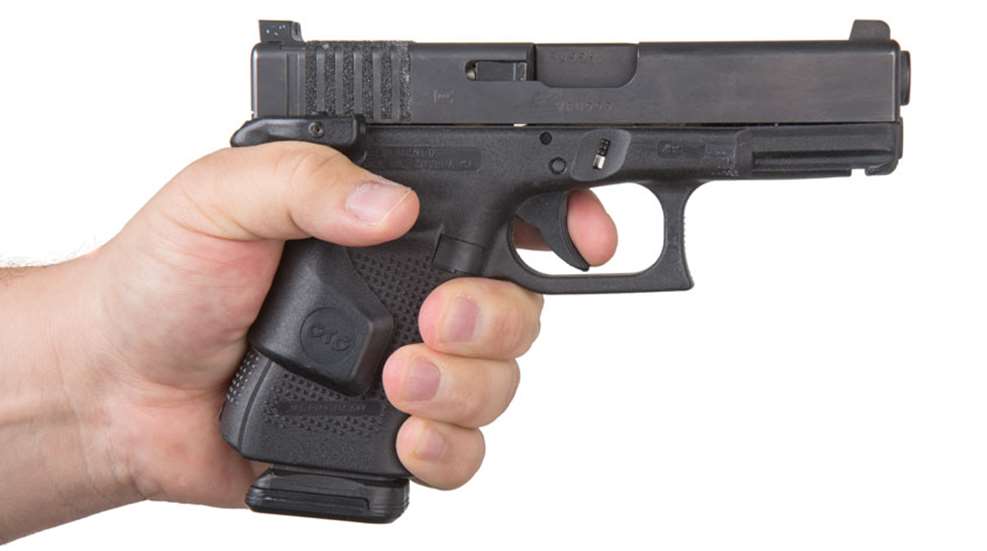
Trigger geometry is a mechanical consideration in firearm performance. It influences precision, consistency and ergonomics. While casual shooters may not always consider its importance, professional defensive and competitive shooters recognize the influence it can have when it comes to fire control. Understanding the intricacies and nuances of trigger geometry can further enhance your shooting performance.
Trigger geometry encompasses the physical dimensions, shape, position and mechanical properties of a firearm’s trigger. The shape of the trigger is a key aspect, with flat triggers offering consistent finger placement for uniform pull dynamics, making them a favorite among competitive shooters for their precision. On the other hand, curved triggers are designed to follow the natural curve of the finger, providing positive pad placement and making them the industry standard for most models of firearms.
Another contributing factor is trigger reach, which refers to the distance between the backstrap of the firearm and the center of the trigger face. Proper reach ensures an optimal finger rest on the trigger without undue strain.
Location, Location, Location
The position of the trigger also plays a role, with adjustments accommodating various hand sizes and grip styles. Trigger width contributes to the tactile experience, as wider triggers distribute rearward force more evenly across the finger pad, reducing perceived effort, while narrower triggers enhance tactile feedback. The dynamics of trigger pull, including the pull weight, pull length and reset distance, are all contributing factors to overall consistency.
Pull weight determines the force required to actuate the trigger, pull length defines the distance the trigger must travel before firing and reset distance refers to the forward motion needed to re-engage the sear link for follow-up shots.
Shooter preference, which is deeply personal and shaped by physical characteristics, shooting discipline and personal profile, is a further consideration.
Ergonomics play a role in harmonizing trigger geometry with individual predilections. For instance, shooters with larger hands often favor greater trigger reach, while those with smaller hands benefit from reduced reach.
Adjustable triggers cater to a wider range of users by providing customization options. This customization not only enhances repeatability, but also minimizes the risk of foreign input into the shooting process, which can detract from performance.
Different shooting disciplines demand specific trigger characteristics. Precision shooters often prefer flat triggers with light pull weights and short resets to maximize accuracy. Tactical shooters, however, tend to favor curved triggers with moderate pull weights and longer resets to maintain control. For rapid-fire scenarios, triggers with short resets and low pull weights enable faster follow-up shots. Sensitivity and feedback also vary among shooters; some favor a crisp, tactile break for predictability, while others prefer a smooth rolling pull for a more fluid break. The adaptability of a trigger system often becomes a decisive factor in its suitability for varied shooting applications, underscoring the importance of matching the trigger to the shooter’s specific needs.
The interplay between trigger geometry and shooter preference can have significant implications for performance. Accuracy benefits from appropriate alignment between the trigger and the shooter’s finger, ensuring consistent and repeatable force application and minimizing lateral movement. Control can be enhanced with more ergonomic triggers allowing shooters to maintain mental and visual focus during fire control expending less mental resources on the press itself.
Speed is critical in competitive or defensive scenarios, where short resets and light pull weights facilitate rapid follow-up shots. However, excessively light triggers can compromise safety, particularly in high-stress environments, underscoring the importance of balancing safety and performance. The subtle interplay of these factors highlights the need for at least a cursory understanding of trigger dynamics, particularly for those who rely on their firearm for professional or defensive purposes.
Optimized For Efficiency
Optimizing trigger geometry requires deliberate modifications. Aftermarket triggers offer custom geometries, adjustable pull weights and enhanced reset mechanisms tailored to individual needs. Adjustable triggers provide the flexibility to fine-tune reach, pull weight and overtravel for a personalized feel.
For those seeking the highest level of customization, professional gunsmiths can modify triggers to match a shooter’s physical characteristics and shooting style. This level of customization can significantly enhance the shooter’s confidence and fit, contributing to improved consistency and results over time.
Advancements in trigger technology have further expanded the range of options available to shooters. Modern designs often incorporate precision-engineered components that reduce friction and enhance durability, ensuring a smoother and more reliable trigger pull. Innovations such as electronic triggers, which use sensors instead of mechanical linkages, although not nearly as reliable as traditional mechanical triggers, can be fine-tuned with extraordinary precision.
Whether selecting a firearm, upgrading a trigger or consulting a gunsmith, attention to trigger geometry can lead to noticeable improvements and a more personalized shooting experience. The consideration of advanced materials, ergonomic innovations and emerging technologies further emphasizes the potential for continued refinement and optimization in trigger systems, ensuring that shooters of all skill levels can benefit from advancements and variety in trigger geometry.




































